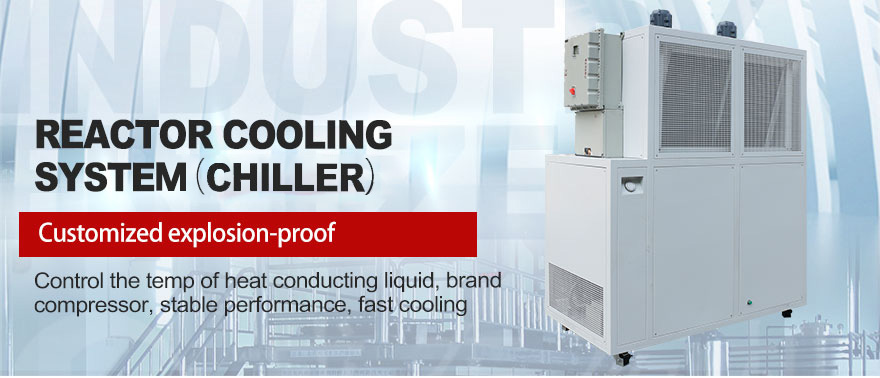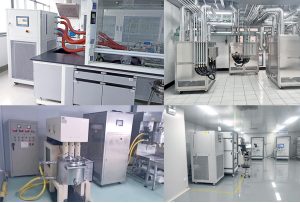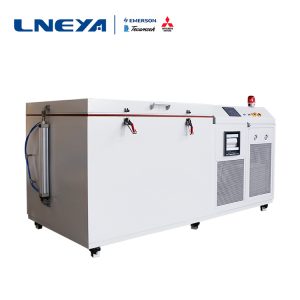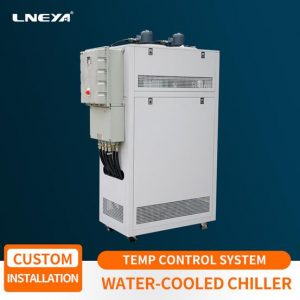どのような観点から循環式クーラーの使用を検討すべきか?
Circulating coolers are a popular choice for temperature-critical applications because they provide stable temperature control, constant flow and constant pressure control. Many process heating systems require cooling and heating. For example, many conveyor heating zones have cooling zones. Injection molding requires a lot of heat dissipation. And the reactor is usually jacketed with cold water. There are many ways to cool this type of system, including tap water, tower water, building chilled water, and circulating coolers.

Circulating coolers are a popular choice for applications with strict temperature requirements. They provide stable temperature control-usually within 0.1°C, and provide constant flow and constant pressure control. They can be cooled to below ambient temperature, and when equipped with a heater, they can be kept above ambient temperature.
There are a variety of recirculating cooler products in the industry, manufacturers and options to choose from, choosing the right system for your application can be a challenge. However, there are three main considerations:
First, you need to define basic cooler requirements, such as capacity, coolant temperature, coolant and flow rate. Second, you need to determine which additional options are needed, such as heaters, auto-start functions, filters, alarms, and communication functions. Finally, you should consider other details such as noise level, size, warranty, and after-sales service and support.
Coolant flow and pump options. Most chiller manufacturers offer a choice of pumps with chillers. Positive displacement pumps are popular because they provide constant flow regardless of the pressure drop across the system. One of the disadvantages is that they need to be replaced regularly. Centrifugal pumps have a longer service life, but because the flow rate depends on the pressure drop across the system, they may not be suitable for applications with high pressure drops. Turbo pumps have the reliability of centrifugal pumps, but can provide greater pressure drop. To choose the right pump, you first need to consider the required flow rate and pressure drop in the system. Then, if there is more than one type of pump that meets your requirements, you should choose based on factors such as maintenance and cost.
Choose the right coolant. Most standard models of chillers can treat ordinary distilled water or tap water as a coolant. It may be necessary to add additives such as algaecides to prevent algae growth. For set points below 10°C, it is recommended to use a mixture of glycol and water to lower the freezing point of the fluid. (Another advantage is that adding glycol can inhibit corrosion and algae.) Using a mixture of glycol and water will affect the cooling capacity of the cooler because it does not transfer heat like pure water. If your application requires, most chiller manufacturers also provide options for deionized water and high-purity application systems.
When choosing a cooler, some other considerations may be important for your application. If people are going to work near the chiller, you may need to consider the level of noise it generates, as this will vary between manufacturers.
(The above content comes from network data, if you have any questions, please contact to delete.)
関連推奨品
-
冷凍・暖房用サーモスタットの代表的なアプリケーションの紹介
1144冷凍・加熱サーモスタットは、化学工業で一般的に使用される高温・低温温度制御システムです。反応器、リアクター、発酵タンク、抽出、蒸留などを冷蔵・加熱することができます。その仕組みは...
詳細を見る -
超低温冷凍機圧力コントローラーの故障を解決するには?
1270産業用超低温冷凍機が運転中にコントローラー関連の故障に見舞われた場合、その解決が間に合わなければ、圧力コントローラーが使用できなくなる可能性があります。圧力コントローラーは、超低温冷凍機において非常に重要な役割を果たしています。
詳細を見る -
反応炉の自動温度制御システムの水冷チラーの緊急時用
851製薬と化学生産では、反応器の自動温度制御システムは広く見られる。企業の安全な生産を確保するために、ユーザーが不測の事態に直面した時、どのようなことに注意すべきか?
詳細を見る -
循環式冷凍機の冷媒は何ですか?
1052再循環冷凍機の冷凍温度は業界によって異なるため、選択する冷媒も異なる。再循環チラーを選ぶ際には、冷媒の種類や冷媒の種類を明確に理解することも必要です。
詳細を見る
 LNEYA工業用冷凍機 メーカー サプライヤー
LNEYA工業用冷凍機 メーカー サプライヤー














